
Ladakh: The Ultimate High-Altitude Adventure you can’t miss
Let us share our recent adventure in Ladakh, a place that has truly captured my heart (and possibly my lungs, given the altitude). Known as the “Land of High Passes,” Ladakh is a high-altitude desert that beautifully blends ancient Buddhist culture with the majestic Himalayan landscapes. Our journey through Ladakh in 2023 was nothing short of magical, and I believe it offers unique experiences that you won’t find anywhere else in India or perhaps the world. Ladakh is nestled between the Karakoram and Himalayan Mountain ranges, with elevations ranging from 2,700 to 5,500 meters. The region is a visual feast of stark mountains, blue lakes, ancient monasteries, and a rich cultural heritage. Imagine prayer flags fluttering against snow-capped peaks and crystal-clear night skies filled with countless stars. While most travellers stick to the popular routes covering Leh, Pangong, and Nubra Valley, Ladakh is home to many hidden treasures that remain largely untouched by mass tourism. Just remember to pack your sense of adventure and maybe a few extra memory cards for your camera—you’re going to need them!
Essential Planning Information
Best Time to Visit Ladakh
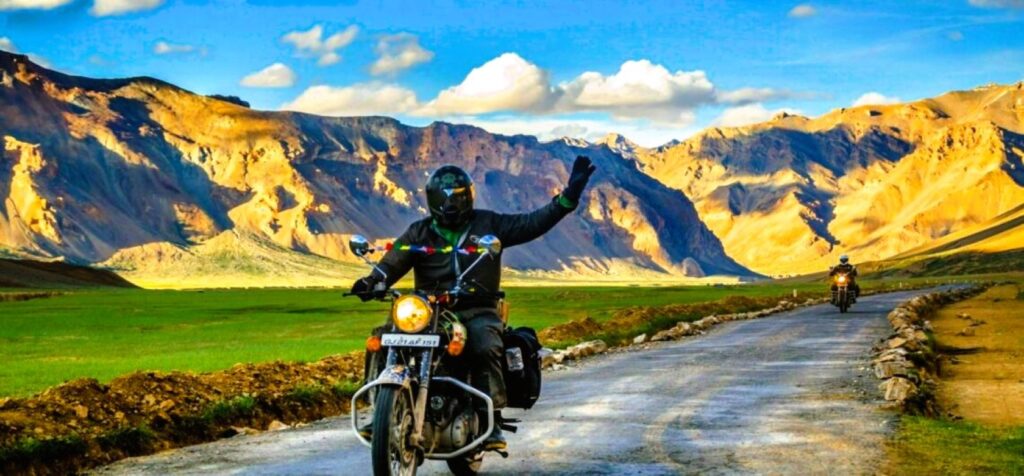
Ladakh’s extreme climate makes timing your visit crucial:
- Peak Season (June-September): Ideal weather with temperatures between 15-30°C, all roads and attractions open, but higher prices and crowds
- Shoulder Season (April-May, October): Fewer tourists, lower prices, but some passes may be closed or just opening
- Winter (November-March): For adventurous travelers only—temperatures drop to -20°C, many roads close, but offers unique experiences like the Chadar Trek (frozen river trek) and snow leopard sightings
Permits You’ll Need
Inner Line Permit (ILP): Required for most popular destinations including Pangong Lake, Nubra Valley, and Tso Moriri
- For Indian Nationals: ₹420 per protected area
- For Foreign Nationals: ₹420 per protected area plus Protected Area Permit (PAP)
- How to Obtain: Apply online through https://lahdclehpermit.in/ or in person at the DC Office in Leh
- Processing Time: 24-48 hours
Wildlife Sanctuary Permits: Separate permit for Hemis National Park (₹100) Tip: Apply for all permits simultaneously, even if you’re unsure about visiting every area. Having permits ready gives you flexibility if your plans change.
Acclimatization: Critical for Your Safety
Ladakh’s high altitude requires proper acclimatization to prevent Acute Mountain Sickness (AMS). Follow this essential 3-day plan: Day 1: Arrival in Leh (3,500m)
- Rest completely for at least 6-8 hours
- Drink 4-5 liters of water throughout the day
- Avoid alcohol and smoking
Day 2: Leh Exploration
- Visit nearby attractions (Shanti Stupa, Leh Palace)
- Continue hydrating extensively
Day 3: Gradual Elevation
- Begin visits to slightly higher elevations
- Return to Leh for overnight stay
Warning Signs of AMS: Persistent headache, dizziness, nausea, fatigue—if symptoms persist, descend to lower altitude immediately and seek medical help.
How to Reach Ladakh
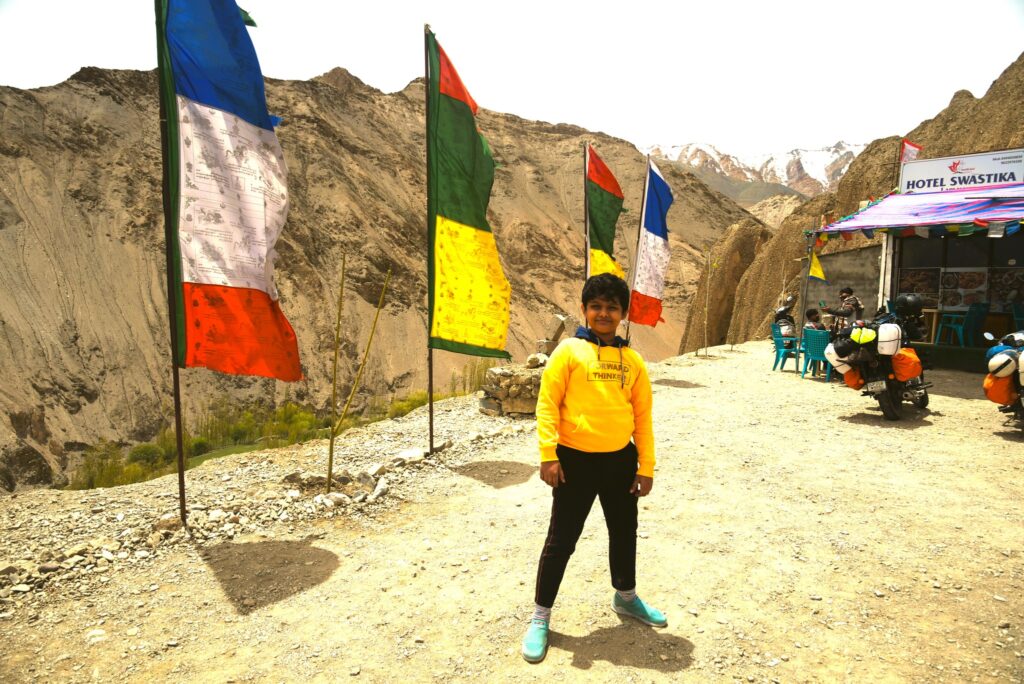
By Air: Daily flights to Kushok Bakula Rimpochee Airport (IXL) in Leh from Delhi, Mumbai, Srinagar, and Chandigarh. Flight time from Delhi is approximately 1.5 hours. By Road: Two spectacular highway options:
- Manali-Leh Highway (473 km): Open June-October, crosses five high-altitude passes including Tanglang La (5,328m)
- Srinagar-Leh Highway (434 km): Open May-November, generally easier drive with lower passes
Local Transportation in Ladakh:
- Private taxis: Most flexible but expensive (₹2,500-3,500/day)
- Shared taxis: Economical for popular routes (₹300-1,500 depending on distance)
- Motorcycles: Available for rent in Leh (₹1,200-1,800/day)
- Buses: Limited government bus services to major towns (most economical)
Top 15 Places to Visit in Ladakh (Plus Hidden Gems)
1. Pangong Tso Lake: The Chameleon Waters of Ladakh
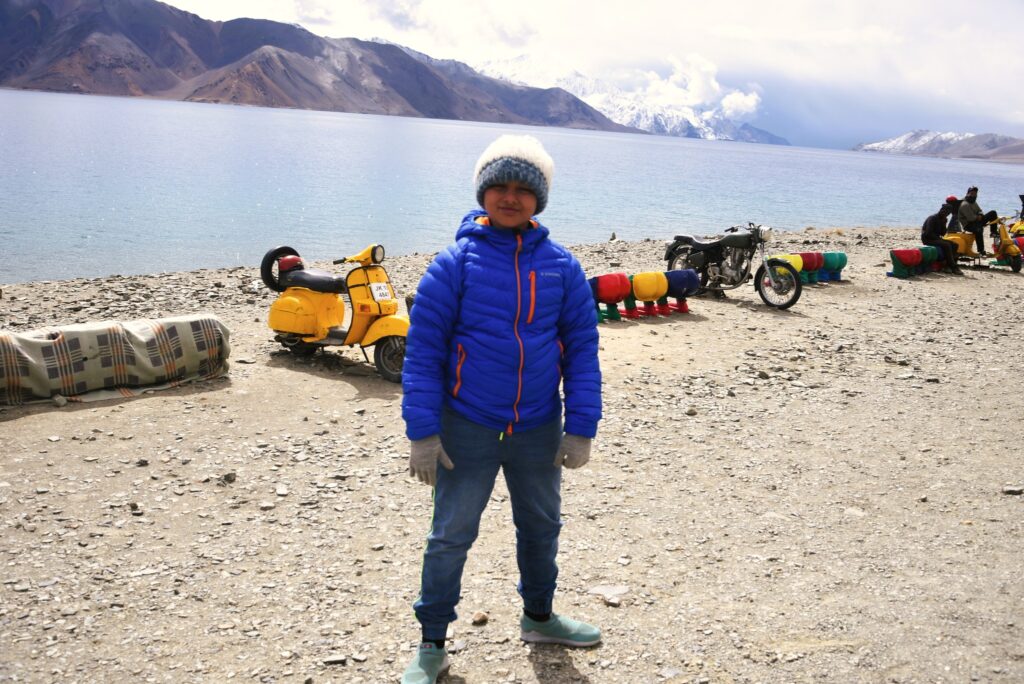
Why It’s Special: This stunning 134 km long lake changes color throughout the day, shifting between shades of blue, green, and even purple as the light changes. Made famous by the Bollywood film “3 Idiots,” Pangong’s beauty transcends its cinematic fame with mountains reflected in its crystal-clear waters. Must-Do Experiences:
- Watch the sunrise paint the mountains and lake in golden hues
- Camp at Spangmik village with lake views (numerous glamping options available)
- Photograph the lake from multiple viewpoints as its colors transform throughout the day
- Spot migratory birds including bar-headed geese during summer months
Practical Information:
- Location: 225 km from Leh (5-6 hour drive)
- Permits Required: Inner Line Permit
- Best Time: May to September
- Accommodation: Options range from luxury camps (₹12,000+) to basic homestays (₹1,000-1,500)
Insider Tip: Continue 7 km beyond the main tourist spot at Spangmik to Man village for equally spectacular views with far fewer crowds.
2. Nubra Valley: The Valley of Flowers and Double-Humped Camels
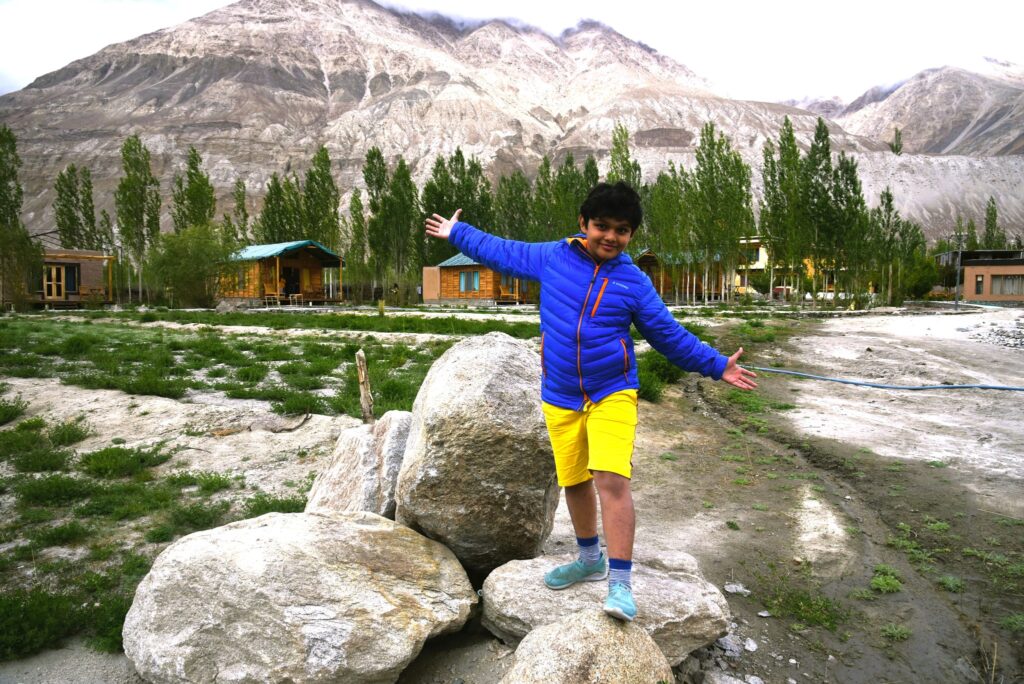
Why It’s Special: This surreal valley features white sand dunes surrounded by snow-capped mountains where Bactrian (double-humped) camels roam. Once part of the ancient Silk Route, Nubra Valley offers a unique landscape where high-altitude desert meets lush greenery along river oases. Must-Do Experiences:
- Ride Bactrian camels at Hunder Sand Dunes during golden hour
- Visit Diskit Monastery and its towering 32-meter Buddha statue
- Explore Panamik hot springs for a natural therapeutic bath
- Visit the northernmost village accessible to tourists—Turtuk—for distinct culture and apricot orchards
Practical Information:
- Location: 150 km from Leh via Khardung La Pass (4-5 hour drive)
- Permits Required: Inner Line Permit
- Best Time: May to September
- Accommodation: Numerous options in Diskit and Hunder (₹1,500-10,000)
Insider Tip: Stay in a traditional Ladakhi homestay in Turtuk to experience the unique Balti culture and cuisine that differs from the rest of Ladakh.
3. Thiksey Monastery: Ladakh’s Mini Potala Palace
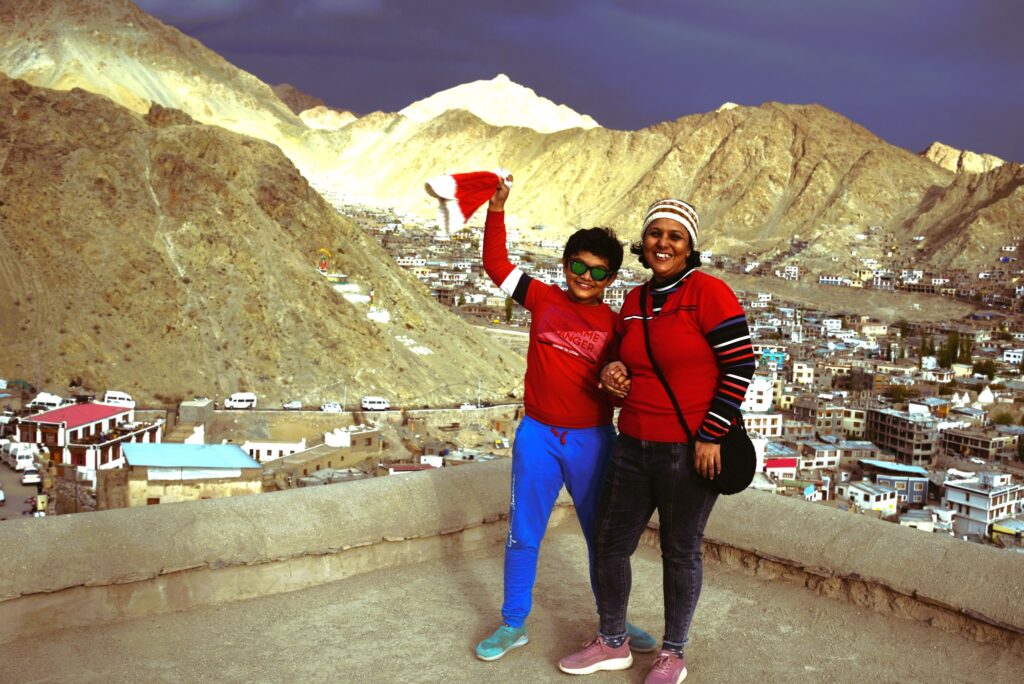
Why It’s Special: Often compared to Tibet’s Potala Palace for its architectural similarity, this 15th-century monastery rises dramatically on a hill, housing one of Ladakh’s most important Buddhist temples. The 15-meter tall Maitreya Buddha statue inside spans two floors and is a masterpiece of Buddhist art. Must-Do Experiences:
- Attend the morning prayer ceremony (6:00-7:00 AM) with chanting monks
- Climb to the rooftop for panoramic views of the Indus Valley
- Visit the Maitreya Temple and its magnificent Buddha statue
- Explore the meditation caves used by monks
Practical Information:
- Location: 19 km from Leh (30-minute drive)
- Entry Fee: ₹50
- Prayer Ceremony Timing: 6:00-7:00 AM daily
- Best Time: Year-round, but especially beautiful at sunrise
Insider Tip: Time your visit during the annual Gustor Festival (October/November) to witness spectacular masked dances and ritual ceremonies that have remained unchanged for centuries.
4. Khardung La Pass: The World’s (Debatable) Highest Motorable Pass
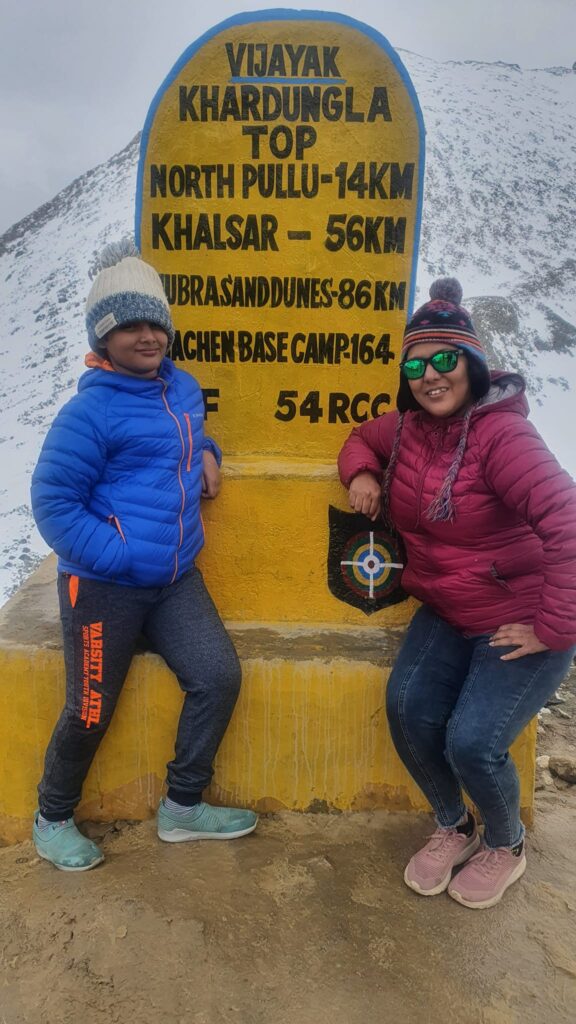
Why It’s Special: Long claimed to be the world’s highest motorable pass at 5,359 meters (though this claim is disputed), Khardung La is nevertheless a bucket-list achievement for adventure travelers. The pass offers breathtaking panoramic views of the Ladakh and Karakoram ranges. Must-Do Experiences:
- Take the obligatory photo with the Khardung La signboard
- Enjoy a hot cup of tea at the world’s highest cafeteria
- Spend time at the small temple with fluttering prayer flags
- For the adventurous, cycle down from the pass to Leh (arrange in advance)
Practical Information:
- Location: 40 km from Leh (1-2 hour drive)
- Altitude: 5,359 meters (17,582 ft)
- Best Time: May to October (can close temporarily due to snowfall)
- Safety Note: Spend minimal time at the top to avoid altitude sickness symptoms
Insider Tip: Start your journey early (before 9 AM) to avoid traffic jams and catch clearer mountain views before clouds gather. Carry extra layers—the temperature at the pass can be 15°C colder than in Leh.
5. Tso Moriri Lake: The Pristine High-Altitude Lake
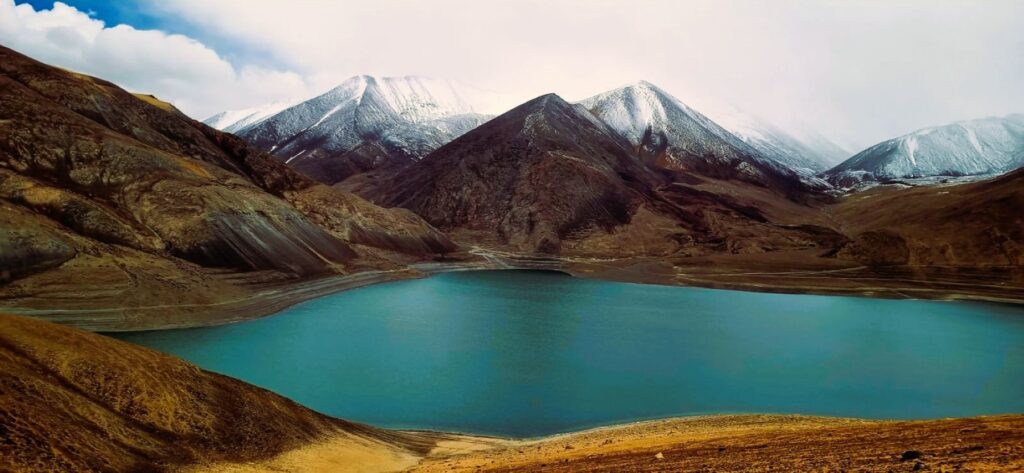
Why It’s Special: Less visited than Pangong but equally spectacular, this high-altitude lake (4,522m) is surrounded by snow-capped peaks and is a designated wetland reserve. Its deep blue waters against the backdrop of barren mountains create a striking contrast that photographers adore. Must-Do Experiences:
- Watch for unique wildlife including marmots, Tibetan wild ass (kiang), and migratory birds
- Visit the nomadic settlements of the Changpa people, traditional shepherds of the region
- Photograph the lake at sunrise when the mountains reflect perfectly in the still water
- Explore nearby Korzok village and its ancient monastery
Practical Information:
- Location: 220 km from Leh (7-8 hour drive)
- Permits Required: Inner Line Permit
- Best Time: June to early September
- Accommodation: Limited options in Korzok village (₹1,500-4,000)
Insider Tip: Unlike Pangong, Tso Moriri receives far fewer visitors. Plan to stay overnight to experience the extraordinary stillness and star-filled night skies that make this remote location special.
6. Hemis Monastery: Ladakh’s Largest Monastic Institution
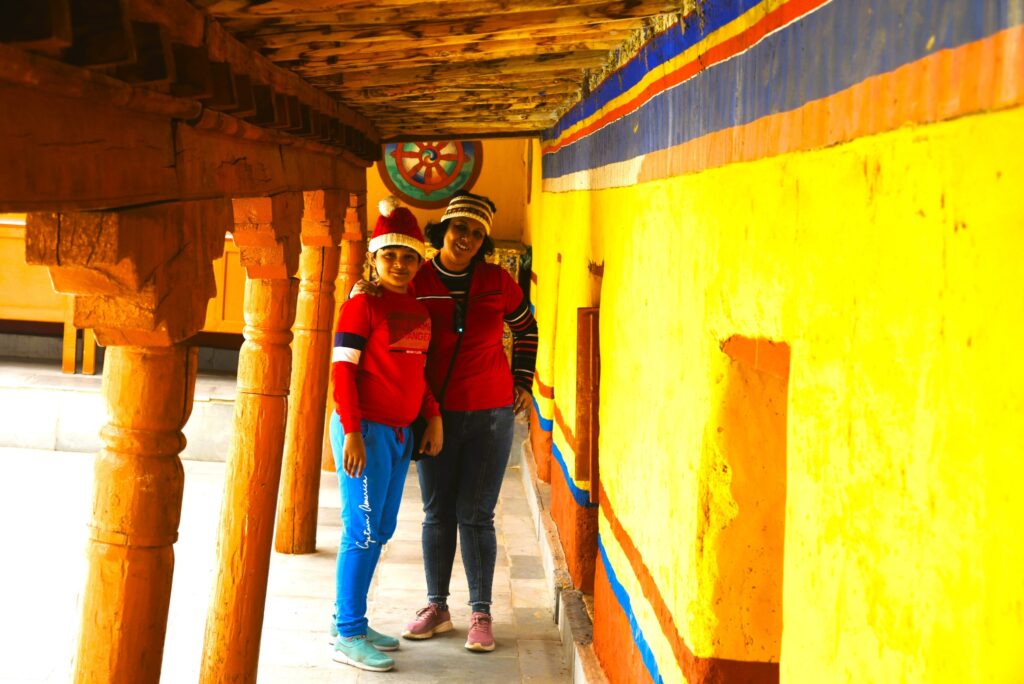
Why It’s Special: Founded in 1630, Hemis is Ladakh’s largest and wealthiest monastery, renowned for its spectacular annual festival featuring masked dances. The monastery houses an impressive collection of ancient thangkas (Buddhist paintings), statues, and artifacts including a copper statue of Buddha and gold stupas. Must-Do Experiences:
- Explore the monastery museum with its rare collection of Buddhist art
- Visit the main prayer hall with its massive thangkas and ornate decorations
- If possible, attend the Hemis Festival (June/July) to witness the famous Cham dance
- Hike to meditation caves in the hills above the monastery
Practical Information:
- Location: 45 km from Leh (1 hour drive)
- Entry Fee: ₹50 (additional ₹50 for photography)
- Museum Fee: ₹100
- Best Time: Year-round; June/July for Hemis Festival
Insider Tip: While the festival attracts crowds, visiting Hemis in winter offers a unique experience—you might witness monks debating Buddhist philosophy in the courtyard, a tradition rarely seen by tourists.
7. Magnetic Hill: Ladakh’s Gravity-Defying Wonder
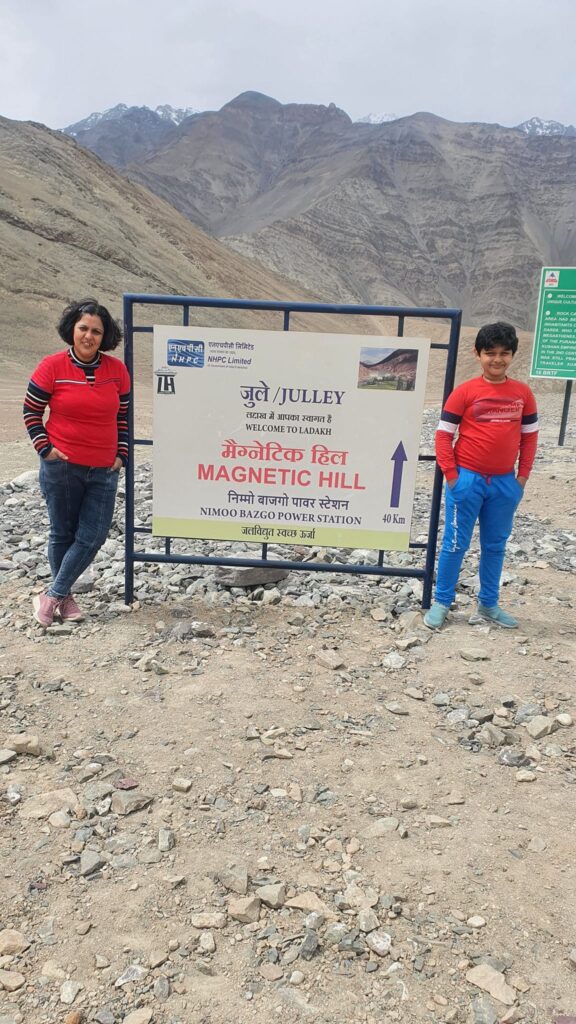
Why It’s Special: This natural optical illusion creates the appearance that vehicles roll uphill when placed in neutral at a marked spot on the highway. While locals once attributed it to magnetic properties, it’s actually a gravity hill where the surrounding landscape creates a visual illusion altering your perception of slope. Must-Do Experiences:
- Park at the designated box on the road and experience the illusion firsthand
- Visit the small information stand explaining the scientific phenomenon
- Capture photos/videos of your vehicle appearing to defy gravity
- Enjoy panoramic views of the Ladakh range from this scenic spot
Practical Information:
- Location: 30 km from Leh on Leh-Srinagar Highway
- Entry Fee: Free
- Time Required: 15-20 minutes
- Best Timing: Morning hours when traffic is lighter
Insider Tip: For the best effect, position your vehicle exactly as directed and turn off the engine completely. The phenomenon is subtle but fascinating when experienced correctly.
8. Shanti Stupa: Leh’s Gleaming Peace Monument
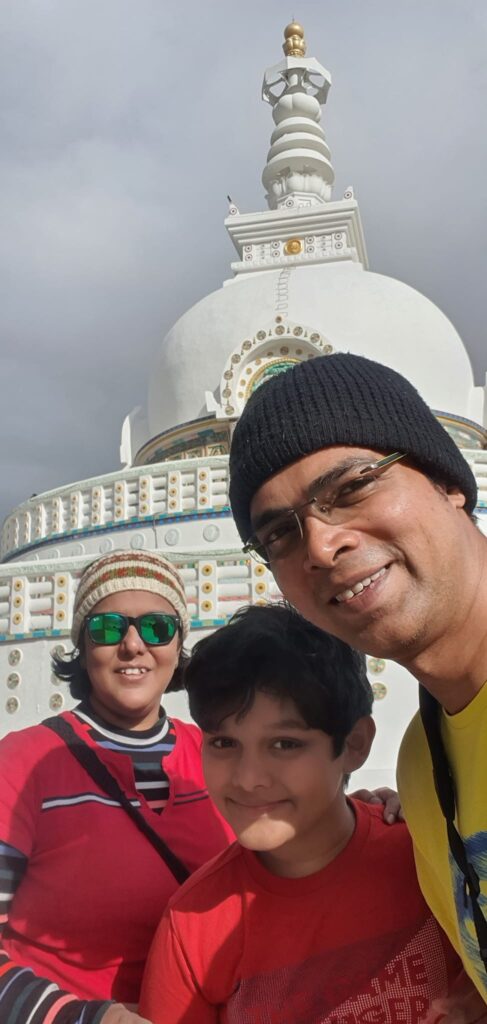
Why It’s Special: Perched on a hilltop overlooking Leh, this striking white-domed Buddhist monument was built in 1991 to promote world peace and commemorate 2,500 years of Buddhism. The stupa offers spectacular panoramic views of Leh town and the surrounding Himalayan landscape. Must-Do Experiences:
- Climb the 500 steps to reach the stupa (or drive up the access road)
- Watch the sunset transform the mountains into a canvas of reds and oranges
- See the stupa illuminated after dark when it glows against the night sky
- Examine the stupa’s base panels depicting Buddha’s life and teachings
Practical Information:
- Location: 5 km from Leh Market
- Entry Fee: Free
- Best Time: Sunrise or sunset for golden light photography
- Opening Hours: 5 AM to 9 PM
Insider Tip: Combine your visit with Leh Palace in the afternoon, then stay for sunset at Shanti Stupa before enjoying dinner at one of the rooftop restaurants in Leh Market with views of the illuminated stupa.
9. Diskit Monastery: Guardian of the Nubra Valley
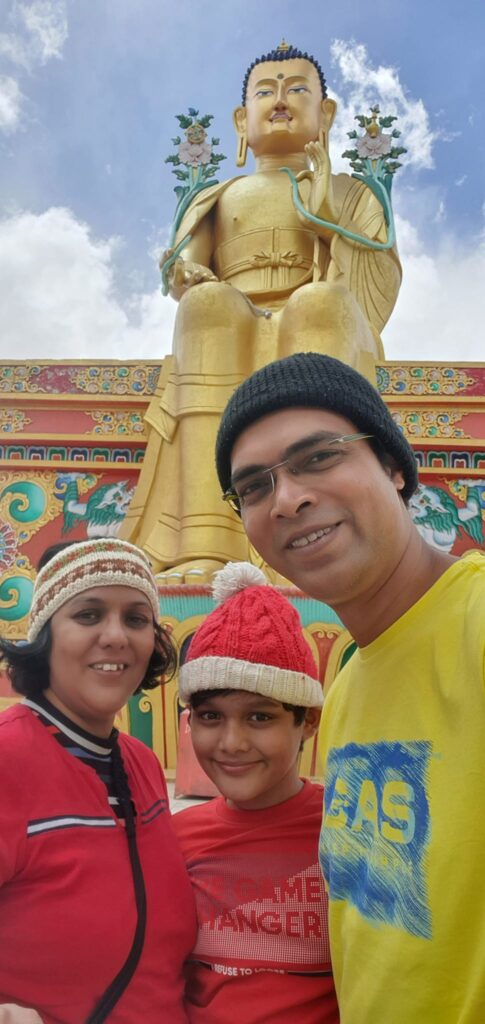
Why It’s Special: As one of the largest high-altitude national parks in South Asia, Hemis is renowned for its population of the elusive snow leopard. The park’s diverse terrain of steep ridges, narrow valleys, and alpine meadows supports rare wildlife including Tibetan wolf, Eurasian brown bear, and blue sheep (bharal). Must-Do Experiences:
- Trek on marked trails through stunning alpine landscapes
- Visit Rumbak village, an authentic Ladakhi settlement within the park
- Join a guided snow leopard expedition in winter (January-March)
- Birdwatch for lammergeier vultures, golden eagles, and Himalayan griffons
Practical Information:
- Location: Entry point 5 km from Leh
- Permit Fee: ₹100 (additional charges for trekking)
- Best Time: May-October for general visits; January-March for snow leopard sightings
- Accommodation: Homestays in Rumbak village; camping with proper permits
Insider Tip: While summer offers easier access, serious wildlife enthusiasts should visit in winter when snow drives animals to lower elevations. The Ulley Valley has become known for reliable snow leopard sightings in recent years.
10. The Confluence of Indus and Zanskar Rivers (Sangam)

Why It’s Special: This dramatic meeting point of two major rivers—the greenish Indus and the blue Zanskar—creates a striking visual spectacle as their distinct colors flow side by side before eventually merging. The confluence is framed by stark mountain landscapes that enhance its beauty. Must-Do Experiences:
- Photograph the contrasting river colors from the viewing platform
- Take a short river rafting experience from the confluence (seasonal)
- Visit the nearby magnetic hill phenomenon
- Stop at Gurudwara Pathar Sahib on the same route
Practical Information:
- Location: 35 km from Leh on Leh-Srinagar Highway
- Entry Fee: Free
- Best Time: May to early July when color contrast is most visible
- Time Required: 30-45 minutes
Insider Tip: Visit between 9-11 AM when sunlight directly illuminates the rivers, making their color difference most pronounced. During late summer, monsoon silting reduces the distinct color separation.
11. Hall of Fame Museum: Honoring Battlefield Heroes
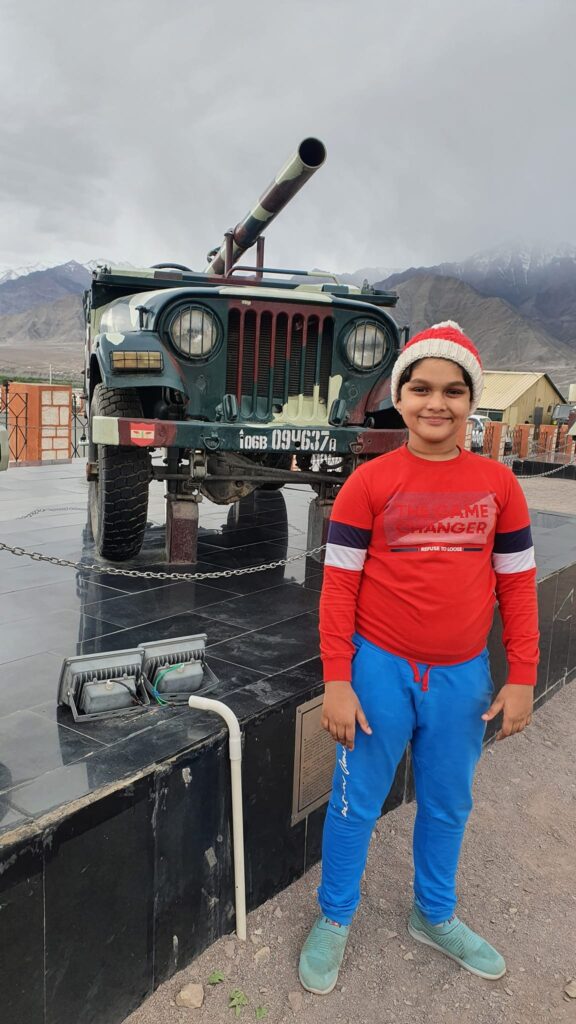
Why It’s Special: This museum created by the Indian Army commemorates the soldiers who lost their lives defending India’s borders, particularly during the Kargil War. Beyond its military focus, the museum offers insights into Ladakhi culture, wildlife, and the extreme conditions of high-altitude warfare. Must-Do Experiences:
- View the well-curated exhibits on the Kargil War and Operation Vijay
- Visit the memorial wall honoring fallen soldiers
- Explore sections on Ladakhi culture, geography, and Buddhist heritage
- Watch the documentary screening about life in these extreme frontiers
Practical Information:
- Location: 4 km from Leh city center on Airport Road
- Entry Fee: ₹50
- Opening Hours: 9 AM to 7 PM (summer); 9 AM to 5 PM (winter)
- Time Required: 1-2 hours
Insider Tip: Visit the rooftop viewing area for a stunning panorama of Leh city with the Stok Kangri mountain range as backdrop—a photo opportunity missed by many visitors.
12. Turtuk: The Last Village Before Pakistan

Why It’s Special: Opening to tourists only in 2010, this former Pakistani territory became part of India after the 1971 war. Inhabited by the Balti people, Turtuk offers a culture, language, and architecture entirely different from the rest of Ladakh, with terraced fields, stone houses, and irrigation systems dating back centuries. Must-Do Experiences:
- Visit the mini-museum in the 16th-century royal house where descendants of the former king still live
- Sample unique Balti cuisine including walnut dumplings and apricot dishes
- Hike to the viewpoint for a glimpse of the K2 mountain range
- Participate in apricot harvesting (July-August) alongside local families
Practical Information:
- Location: 205 km from Leh, beyond Nubra Valley
- Permits Required: Inner Line Permit with specific mention of Turtuk
- Accommodation: Several authentic homestays (₹800-1,500)
- Getting There: Long journey; best combined with Nubra Valley stay
Insider Tip: The village headman occasionally hosts cultural evenings where visitors can listen to traditional Balti music played on instruments not found anywhere else in India—ask your homestay to check if any are planned during your stay
13. Spituk Gompa: The Spectacular Riverside Monastery

Why It’s Special: Dramatically situated on a hilltop overlooking the Indus River, Spituk Monastery (dating to the 11th century) houses over 100 monks and contains important Buddhist artifacts, scriptures, and an impressive collection of thangkas and masks. The monastery is also known for its giant statue of Kali that is revealed only during the annual Gustor Festival. Must-Do Experiences:
- Explore the three-tiered monastery complex with multiple prayer halls
- Visit the Dolma Lhakhang (temple of the Goddess Tara)
- Admire the collection of ancient arms and thangkas in the museum
- Take in spectacular views of the Indus Valley and Leh Airport runway
Practical Information:
- Location: 8 km from Leh city
- Entry Fee: ₹30
- Best Time: Year-round; November for Gustor Festival
- Time Required: 1-2 hours
Insider Tip: Visit in the late afternoon when the setting sun illuminates the white-washed monastery buildings against the dark mountains, creating dramatic photography opportunities from the road below.
14. Kargil: Gateway to the Zanskar Valley
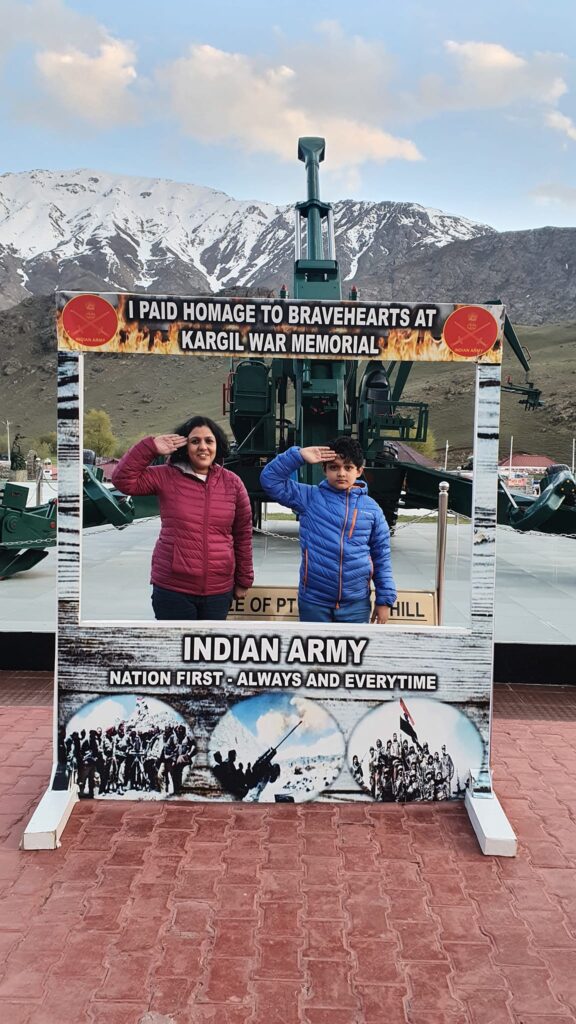
Why It’s Special: More than just a transit point, Kargil offers insights into the region’s mixed Buddhist-Muslim culture and serves as the gateway to the spectacular Zanskar Valley. The town gained prominence after the 1999 India-Pakistan war and the Kargil War Memorial has become an important site for patriotic tourism. Must-Do Experiences:
- Visit the sobering Kargil War Memorial in Drass sector
- Explore ancient Buddhist sites like Mulbekh Monastery with its 9-meter rock-carved Buddha
- Use as a base to visit the isolated Zanskar Valley with its dramatic gorges
- Discover the 11th-century stone sculptures of Kartse Khar
Practical Information:
- Location: 204 km from Leh (5-6 hour drive)
- Best Time: May to September
- Accommodation: Multiple options ranging from ₹1,000-4,000
- Zanskar Access: July to September only
Insider Tip: While most tourists visit Kargil as a stopover, spending an extra day allows you to explore the rarely-visited Suru Valley with its stunning views of the Nun Kun massif—twin peaks over 7,000 meters that create a spectacular backdrop for photography.
Unique Activities That Most Tourists Miss
Beyond these hidden locations, here are unique experiences in Ladakh that even guidebooks rarely mention:
River Meditation Experience
In the Zanskar region, several secluded spots allow you to meditate on smooth riverside boulders while listening to the harmonizing sound of glacial waters. Local Buddhist practitioners believe these specific locations have special energy conducive to mindfulness practice. Ask in Padum village for directions to these unmarked meditation spots.
Traditional Textile Workshops
In Chuchot Shama village (25 km from Leh), a women’s cooperative maintains traditional spinning and weaving techniques using hand-processed pashmina and yak wool. Unlike commercial operations, this authentic workshop offers half-day sessions where visitors can try their hand at spinning using ancient drop spindles.
Nomadic Homestay Experience
During summer months (June-August), some Changpa nomadic families allow pre-arranged visits to their seasonal camps near Tso Moriri, where you can spend a night in a traditional yak-hair tent, help with herding tasks, and learn about their sustainable, mobile lifestyle that has remained largely unchanged for centuries.
Ancient Petroglyphs Viewing
The Domkhar Rock Art Sanctuary near Khaltse contains over 3,000 ancient petroglyphs dating back to 2000 BCE, depicting ibex, hunting scenes, and early Buddhist symbols. Unlike the well-known Alchi paintings, these rock carvings receive only a handful of visitors annually, allowing for a personal connection with Ladakh’s ancient past.
Dawn Prayer Flag Mounting Ceremony
At Thiksey Monastery, visitors who arrange in advance can participate in the pre-dawn prayer flag mounting ceremony, where monks bless new flags before they’re carried to mountain ridges. Few tourists witness this authentic spiritual practice, which usually begins at 5:00 AM.
Ultimate Local Experiences
Looking to truly understand Ladakh? Consider these immersive local experiences:
- Traditional Kitchen Apprenticeship: Several families in Stok village offer one-day cooking lessons in their traditional mud-brick kitchens, teaching visitors to prepare Ladakhi specialties like skyu (thumb-pressed pasta) and khambir (local bread)
- Monastic Debate Sessions: The small Thiksey and Spituk monasteries allow respectful visitors to observe monk debate sessions, an animated form of philosophical discussion with clapping and stamping that few tourists witness
- Agricultural Workdays: During summer harvest season, some villages welcome visitors to join a day of community field work followed by shared meals and celebration—a genuine cultural immersion opportunity
- Mountain Wildlife Tracking: Local conservation guides in the Ulley Valley can take experienced hikers on specialized wildlife observation treks focusing on finding bharal (blue sheep), Tibetan wolves, and possibly snow leopards using traditional tracking methods
Essential Travel Tips for Ladakh
Packing Essentials
- Clothing: Multiple layers (temperatures fluctuate drastically)
- Sun Protection: Hat, sunglasses, SPF 50+ sunscreen (UV exposure is intense at high altitudes)
- Medications: Personal medications, diamox (for altitude sickness), basic first aid
- Electronics: Power bank, camera with extra batteries (cold depletes batteries faster)
- Other: Refillable water bottle, quick-dry towel, toilet paper, hand sanitizer
Budgeting Your Trip
Economy Travel: ₹2,000-2,500/day
- Shared taxis or public transport
- Budget guesthouses/homestays (₹800-1,200/night)
- Local eateries and simple food
Mid-Range Travel: ₹4,000-6,000/day
- Private taxi hire (shared between group)
- Mid-range hotels (₹2,500-4,000/night)
- Good restaurants with varied cuisine
Luxury Travel: ₹10,000+/day
- Private vehicle with dedicated driver
- Luxury hotels and glamping sites (₹8,000+/night)
- Guided experiences and premium dining
Connectivity & Practical Information
- Mobile Network: Only postpaid BSNL, Jio, and Airtel connections work in central Leh; coverage is limited or non-existent in remote areas
- Internet: Available in Leh town but slow; minimal connectivity elsewhere
- ATMs: Available in Leh city; carry sufficient cash for remote areas
- Electricity: Available in towns and larger villages; frequent power cuts; carry power banks
- Language: Ladakhi is primary; Hindi and basic English understood in tourist areas
Responsible Tourism in Ladakh
Ladakh’s fragile ecosystem needs protection. Please follow these guidelines:
- Use refillable water bottles and water purification methods instead of buying plastic bottles
- Respect local customs and dress modestly, especially at religious sites
- Seek permission before photographing locals
- Use biodegradable toiletries as most wastewater goes untreated
- Support local businesses and homestays rather than large chains
- Never disturb wildlife or remove plants/rocks from natural settings
Supporting Local Conservation Initiatives
Several grassroots organizations in Ladakh welcome visitor support:
- Snow Leopard Conservancy India Trust: Join their “Homestay for Habitat” program where your accommodation fees directly support wildlife protection
- Ladakh Ecological Development Group (LEDeG): Offers tours of sustainable building projects and traditional agriculture systems
- Women’s Alliance of Ladakh: Purchase handicrafts from their center in Leh, supporting traditional skills and plastic-free initiatives
- Ladakh Arts and Media Organization (LAMO): Attend cultural events that help preserve traditional performing arts and storytelling
What are some must-visit places and hidden treasures in Ladakh?
Top destinations include Pangong Tso Lake, known for its changing colors and stunning reflections, Nubra Valley with its double-humped camels and monastery, Thiksey Monastery resembling the Potala Palace, Khardung La Pass for panoramic mountain views, and Tso Moriri Lake for tranquility and wildlife. Hidden gems like Hanle Village with its world-class stargazing, Phuktal Monastery built into a cliff, and Dha-Hanu with the unique Brokpa people offer authentic off-the-beaten-path experiences for adventurous travelers.
What are the main ways to reach Ladakh and get around locally?
Ladakh is accessible by air through daily flights to Kushok Bakula Rimpochee Airport from Delhi, Mumbai, Srinagar, and Chandigarh, with a flight time from Delhi of about 1.5 hours. By road, travelers can choose the Manali-Leh Highway, open June to October, or the Srinagar-Leh Highway, open May to November. Local transportation options include private taxis, shared taxis, motorcycle rentals, and limited government bus services, with private taxis offering the most flexibility at a higher cost.
How should I acclimatize properly to stay safe at high altitudes in Ladakh?
Proper acclimatization is crucial in Ladakh to prevent Acute Mountain Sickness. Spend your first day arriving in Leh at 3,500 meters, resting for 6-8 hours, hydrating well, and avoiding alcohol and smoking. Use the following days to explore nearby attractions like Leh Palace and Shanti Stupa while gradually increasing elevation. Be alert for warning signs like headache, dizziness, nausea, or fatigue; if symptoms persist, descend immediately and seek medical assistance.
What permits are required to explore Ladakh, and how can I obtain them?
Most popular destinations in Ladakh require an Inner Line Permit (ILP), which can be obtained online through https://lahdclehpermit.in/ or in person at the DC Office in Leh, with a processing time of 24-48 hours. Foreign nationals may also need a Protected Area Permit (PAP) for certain areas, along with the ILP. A separate permit is required for Hemis National Park. It’s advisable to apply for all permits simultaneously for flexibility.
What is the best time of year to visit Ladakh?
The ideal time to visit Ladakh is during the peak season from June to September when the weather is pleasant, all roads and attractions are open, but be prepared for higher prices and crowds. The shoulder seasons of April-May and October offer fewer tourists and lower prices, though some passes may be closed. Winter visits from November to March are suited only for adventurous travelers interested in unique experiences like snow treks and snow leopard sightings, despite extremely cold temperatures.
